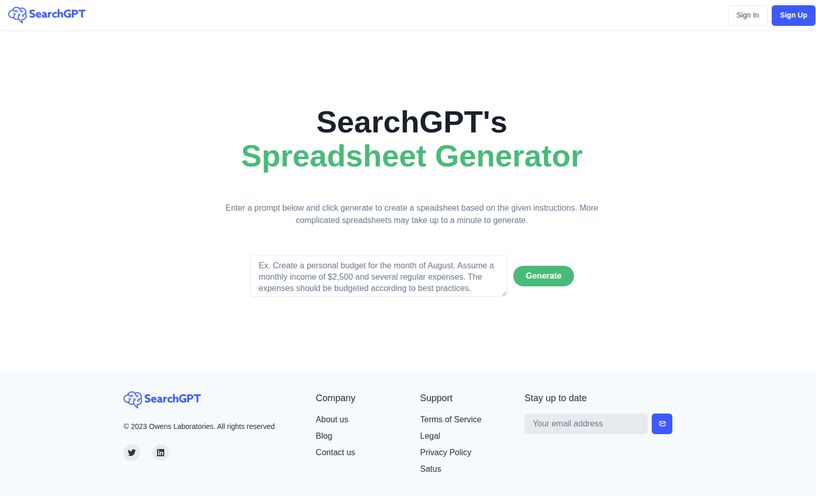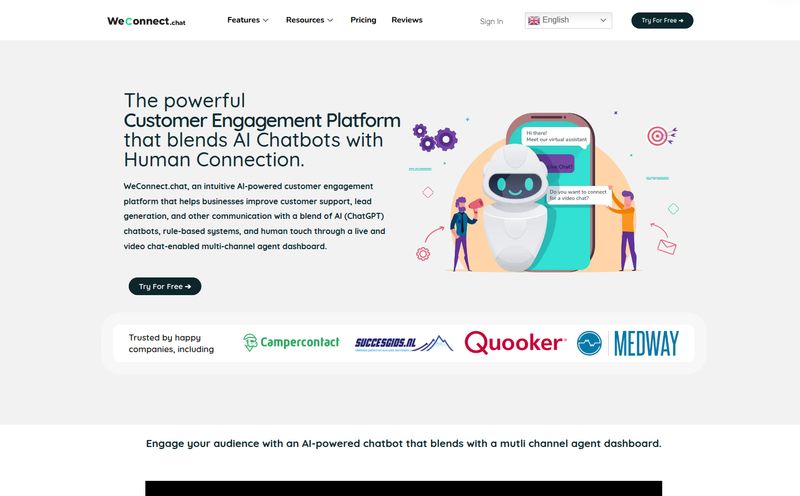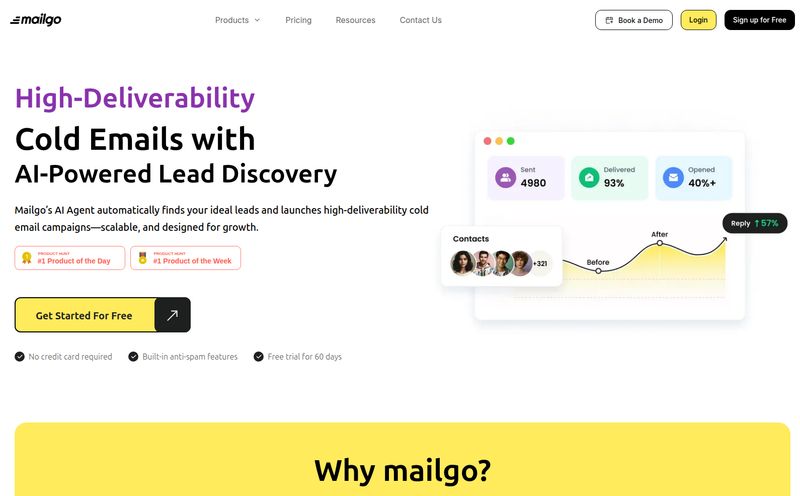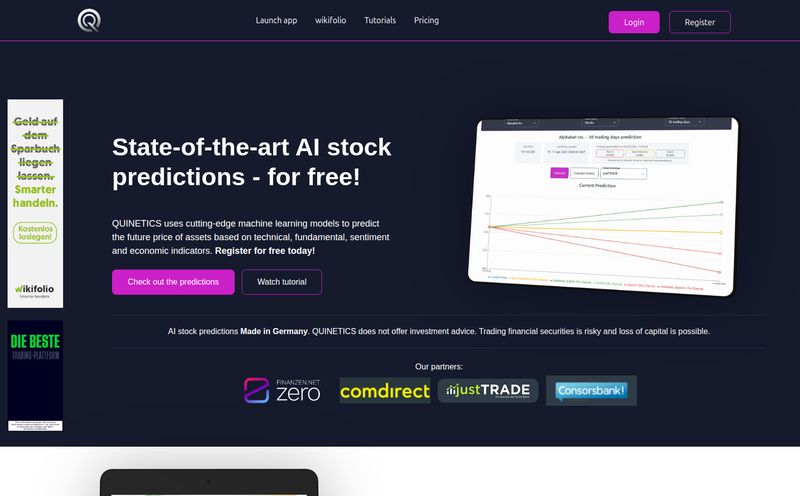If you're in marketing, SEO, or pretty much any digital-first role, your life is a never-ending to-do list. It’s a constant battle against the clock, drowning in a sea of tabs, copy-pasting data, and wishing you had a clone. Or at least an intern who actually enjoys organizing data. For years, I've relied on a messy cocktail of tools like Zapier, IFTTT, and a whole lot of caffeine to stitch my digital life together. It works. Kinda.
Then I stumbled upon Guse. The homepage hit me with "Prompt to automation in seconds." My first thought? Sure, buddy. Another tool promising to solve all my problems with the magic of AI. I’ve seen this movie before. But something was different here. The interface they were showing wasn't a complex flowchart builder; it was… a spreadsheet. A simple, familiar, beautiful spreadsheet. Okay, now you have my attention.
Breaking Down Guse: More Than Just a Fancy Spreadsheet
So what is this thing, really? Imagine if Google Sheets and an automation platform like Make had a baby, and that baby was raised by a friendly AI ghost. That’s Guse. It's a platform that lets you build AI agents and automate your workflows, but your command center for all this power is a spreadsheet. This, for me, is a game-changer. I live in spreadsheets. Most marketers I know do. It's our natural habitat. Guse takes that familiar environment and injects it with some serious automation horsepower.
At its core, it's part of the whole "no-code" movement, but it feels more like "low-code for the rest of us." It’s designed to make building sophisticated, multi-step automations feel less like programming and more like, well, filling out a spreadsheet. The idea of building an 'AI agent' sounds intimidating, but Guse frames it as just another row in your sheet. A simple, elegant idea.
Getting My Hands Dirty with Guse's Best Bits
I signed up for the free plan (because who doesn't love free?) and started poking around. The initial experience is surprisingly smooth. You can literally type a command in plain English, and Guse tries to build the workflow for you. It's not perfect, but it's a fascinating starting point.
The Spreadsheet Interface That Doesn't Suck
This is the star of the show. Instead of dragging and dropping modules on a canvas, which can get messy fast, you're just working with cells, columns and rows. Each row can be a step in your automation. Column A might be the trigger, Column B the first action, Column C an AI instruction, and so on. It feels organized and intuitive. There's no steep learning curve trying to figure out a new UI paradigm. If you can use Excel, you can probably figure out the basics of Guse in about 15 minutes. Honestly, that's a huge win.
The Integration Powerhouse
An automation tool is only as good as the apps it can talk to. Guse claims over 200+ integrations, and they’ve got the big ones covered. I saw icons for Slack, Notion, Gmail, Google Drive, Airtable, Discord... the usual suspects are all there. This is the connective tissue that makes automation actually useful. You can pull a file from Drive, have an AI summarize it, and then post that summary to a specific Slack channel. That’s the kind of workflow that saves actual, tangible time.
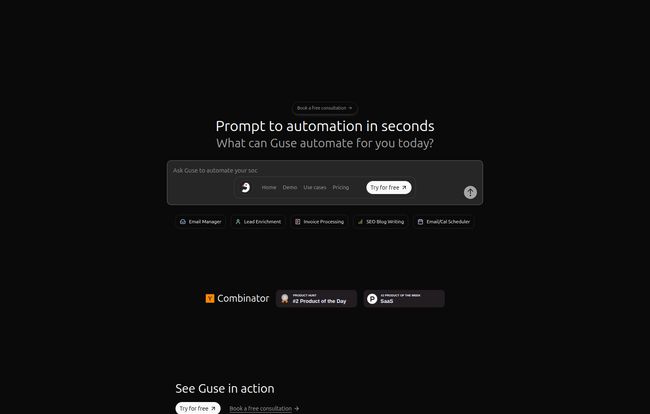
Visit Guse
AI-Powered Workflows (The Magic Sauce)
This is where Guse separates itself from older automation platforms. It’s not just about simple “if this, then that” logic. It’s about inserting an AI brain into the middle of your process. For example, instead of just forwarding an email, you can have Guse's AI read the email, determine its sentiment and intent, and then decide whether to draft a positive reply, a neutral one, or flag it for your personal attention. That's not just automation; that's delegation. You're giving the machine judgment, which is pretty wild when you think about it.
From Theory to Practice: What I'd Actually Use Guse For
Okay, this all sounds cool, but what about the real world? As an SEO guy, my mind immediately went to a few places.
- Content & SEO Workflow: I could build a flow that monitors specific RSS feeds for industry news. When a new article pops up, Guse could use AI to summarize it, draft a tweet about it with relevant hashtags, and add it to a content ideas database in Notion. That’s a solid hour of work automated right there.
- Automated Lead Enrichment: The classic sales/marketing task. A new lead comes in through a form. Guse could take the email, search for their LinkedIn profile, pull their job title and company info, and update the contact record in a CRM. All while you're grabbing coffee.
- Smart Email Responder: We all get those generic outreach emails. Imagine a flow that automatically detects a non-personalized pitch, and sends a polite-but-firm "no thank you" reply, while bubbling up the genuinely interesting emails to your priority inbox. Yes please.
The All-Important Question: What's the Damage?
Alright, let's talk about the pricing. Because the best tool in the world is useless if you cant afford it. Guse has a pretty straightforward structure, and I appreciate the transparency.
| Plan | Price | Key Features |
|---|---|---|
| Free | $0 / month | 500 credits/month, Unlimited flows, Unlimited AI chats |
| Plus | $75 / month | 5,000 credits/month, all Free features, Priority support |
| Team | Custom | Custom credits, Custom integrations, Enterprise support, etc. |
The key thing to understand is the credit system. Guse states that 1 credit = 1 full run of a flow. The Free plan's 500 credits is very generous for tinkering and running a few non-critical automations. The Plus plan at $75 for 5,000 credits seems geared toward small businesses or power users who are starting to really rely on their flows. My only word of caution: with a credit-based system, you need to be mindful of how often your automations run. A flow that triggers on every single email could burn through your credits much faster than one that runs once a day.
The Honest Truth: What I Love and What I Don't
No tool is perfect. After spending some time with Guse, here's my unfiltered take.
What I love is obvious: the spreadsheet interface is brilliant. It lowers the barrier to entry for creating genuinely complex AI automations. The flexibility is fantastic, and the free tier is more than enough to prove its value. It feels like a tool built by people who actually understand the day-to-day grind of office work.
On the other hand, the credit system, while transparent, does make me a little nervous. You have to be strategic. And while it's a "no-code" platform, if you want to build something truly unique and custom, you might find yourself hitting a wall without some basic understanding of how APIs and data structures work. It’s not a magic wand, its a powerful tool that still requires a thoughtful operator.
So, Should You Give Guse a Shot?
My final verdict? Absolutely. Guse has carved out a fascinating niche for itself. It's not necessarily trying to replace heavy-duty enterprise automation platforms, but it's a massive leap forward for the millions of us who are comfortable in a spreadsheet and want to bring smart automation into our work without going back to school for a computer science degree.
If you're a marketer, a founder, an operations manager, or just a productivity nerd looking for an edge, you owe it to yourself to try the free plan. It might just be the friendly AI ghost your to-do list has been waiting for.
Frequently Asked Questions
- What is Guse used for?
- Guse is used to automate tasks and build AI-powered workflows. Common uses include managing emails, enriching sales leads, processing invoices, and even assisting with content creation like writing SEO blog posts, all from a simple spreadsheet interface.
- How is Guse different from Zapier or Make?
- While they are all automation platforms, Guse's main differentiators are its spreadsheet-based interface, which is more intuitive for non-developers, and its deep integration of AI directly into the workflow steps, allowing for more complex decision-making.
- Is Guse difficult to learn for non-technical users?
- Not at all. In my experience, it's one of the easiest automation tools to pick up. If you're comfortable with Google Sheets or Excel, you'll feel right at home. The ability to prompt in natural language also helps flatten the learning curve.
- How does the credit system work in Guse?
- It's pretty simple: one credit is used for every complete run of one of your automations (or "flows"). So if you have a flow that checks for new emails every 15 minutes, it will use a credit each time it runs, whether it finds a new email or not.
- Can I build my own custom integrations?
- The Team plan offers custom integrations. For users on other plans, you'd likely need to use a webhook or an existing integration as a go-between if the app you need isn't natively supported yet. This might require a bit more technical know-how.
- What kind of support does Guse offer?
- The paid Plus plan comes with priority support, while the Team plan offers full enterprise support. Based on my experience, their documentation and community resources are also quite helpful for getting started.
